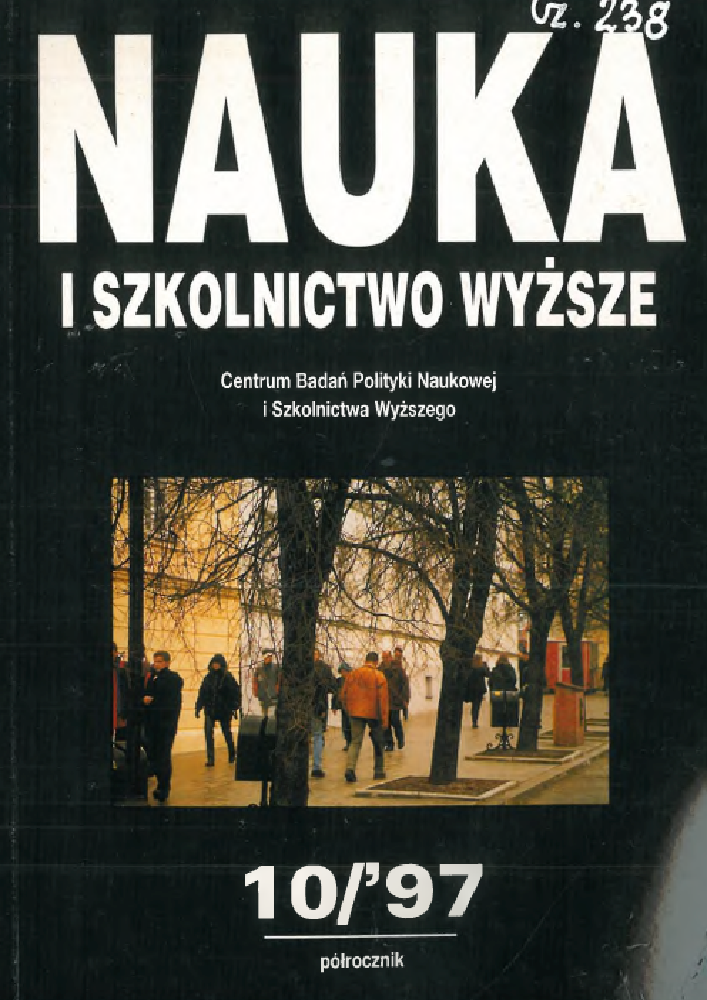Abstract
The article presents the results of research on the survival and development strategy of research organisations in conditions of the transformation of the research system in Poland after 1990. It was assumed that the survival of an organisation is determined by its capacity to acquire and preserve such resources as financial means, material (infrastructure) and human resources as well as (characteristic for scientific institutions) autonomy, prestige and position of the organisation in the system of science and the legitimation of the institution in the community. The research results are based on a study of three institutes of the Polish Academy of Sciences. The empirical analysis covered: 1) strategies for redefining the basic tasks and substantive profile of the organisation (domain, scope of action, research projects, educational tasks assumed, carrying out of non-research tasks); 2) strategies for acquiring and preserving the existing human resources (changes of the level and structure of employment, problems with recruitment of employees and personnel policy, salary scheme, etc.); 3) strategies for acquiring financial resources and development of the material infrastructure (changes in the level and structure of revenues according to various streams of budgetary and non-budgetary funding, physical plant, equipment); 4) role of the autonomy of institutes, gaining scientific position and legitimation in the community and changes of the system of administration and measures taken to make more effective use of existing resources.
References
Aldrich H. 1979 Organizations and Environments. New York: Englewood Cliffs, Prentice Hall.
Emery F., Trist E. 1965 The Casual Texture of Organizational Environments. „Human Relations”, vol. 18.
Etzkowitz H. 1989 The Second Academic Revolution. The Role of the Research University in Economic Development. W: S. Cozzens, P. Healey, A. Rip, J. Ziman (eds.): The Research System in Transition. NATO ASI Series, Behavioral and Social Sciences, vol. 57, Dordrecht: Kluwer Acad. Publ.
Pfeffer J., Salancik G. 1978 The External Control of Organization. New York: Mc Graw Hill.
Scott R, 1965 Reactions to Supervision in a Heteronomous Professional Organization. „Administrative Science Quarterly”, vol. 10.
Scott R. 1992 Organizations: Rational, Natural and Open Systems. New Jersey: Englewood Cliffs, Prentice Hall, Simon & Schuster.
Simon H.A, 1976 Działanie administracji. Warszawa: PWN.
Sprawozdania... KBN Sprawozdania z wykonania budżetu w 1992, 1993 i 1994 roku, część 48. Warszawa: KBN.
Sprawozdanie PAN.. . 1995 Sprawozdanie Polskiej Akademii Nauk za 1994 rok. Warszawa: PAN.
Ziman J. 1987 Science in a "Steady State”. The Research System in Transition. London: Science Policy Support Group.
Ziman J. 1989 What is Happening to Science? W: S. Cozzens, P. Healey, A. Rip, J. Ziman (eds.): The Research System in Transition. NATO ASI Series, Behavioral and Social Sciences, vol. 57. Dordrecht: Kluwer Acad. Publ.
